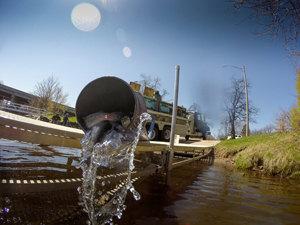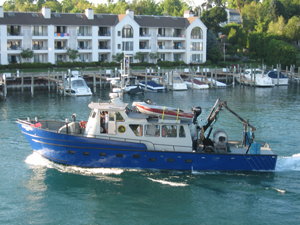August brings new trawl survey to Lake Erie
The Department of Natural Resources will conduct a trawl survey in Lake Erie near Monroe, Michigan, beginning Monday, Aug. 10, and continuing through Friday, Aug. 14.
 “This survey is a new component of the DNR’s annual efforts to assess the fish community in Lake Erie,” said Todd Wills, Lake Huron-Lake Erie area research manager for the DNR. “The data from this survey will be used to describe the status of prey fish populations, assess the abundance of juvenile walleye and yellow perch in Michigan waters, and continue our monitoring efforts for invasive species.”
“This survey is a new component of the DNR’s annual efforts to assess the fish community in Lake Erie,” said Todd Wills, Lake Huron-Lake Erie area research manager for the DNR. “The data from this survey will be used to describe the status of prey fish populations, assess the abundance of juvenile walleye and yellow perch in Michigan waters, and continue our monitoring efforts for invasive species.”
A trawl, which looks like a large, mesh sock, will be towed on the lake bottom behind the research vessel (R/V) Channel Cat, which has a home port at the Lake St. Clair Fisheries Research Station in Harrison Township, Michigan. A number of sites will be sampled in Michigan waters, from the mouth of the Detroit River to the Turtle Island area along the Michigan-Ohio border. The trawl is towed for five to 10 minutes at each site and then hauled on board the vessel. The catch is then sorted, identified and measured. Read more


 The Department of Natural Resources today announced the final totals from its spring fish-stocking efforts. DNR fisheries staff stocked a total of 20,099,988 fish that weighed more than 325 tons and consisted of nine different species and one hybrid.
The Department of Natural Resources today announced the final totals from its spring fish-stocking efforts. DNR fisheries staff stocked a total of 20,099,988 fish that weighed more than 325 tons and consisted of nine different species and one hybrid.


 The Michigan Department of Natural Resources today announced that the survey vessel (S/V)
The Michigan Department of Natural Resources today announced that the survey vessel (S/V) 
